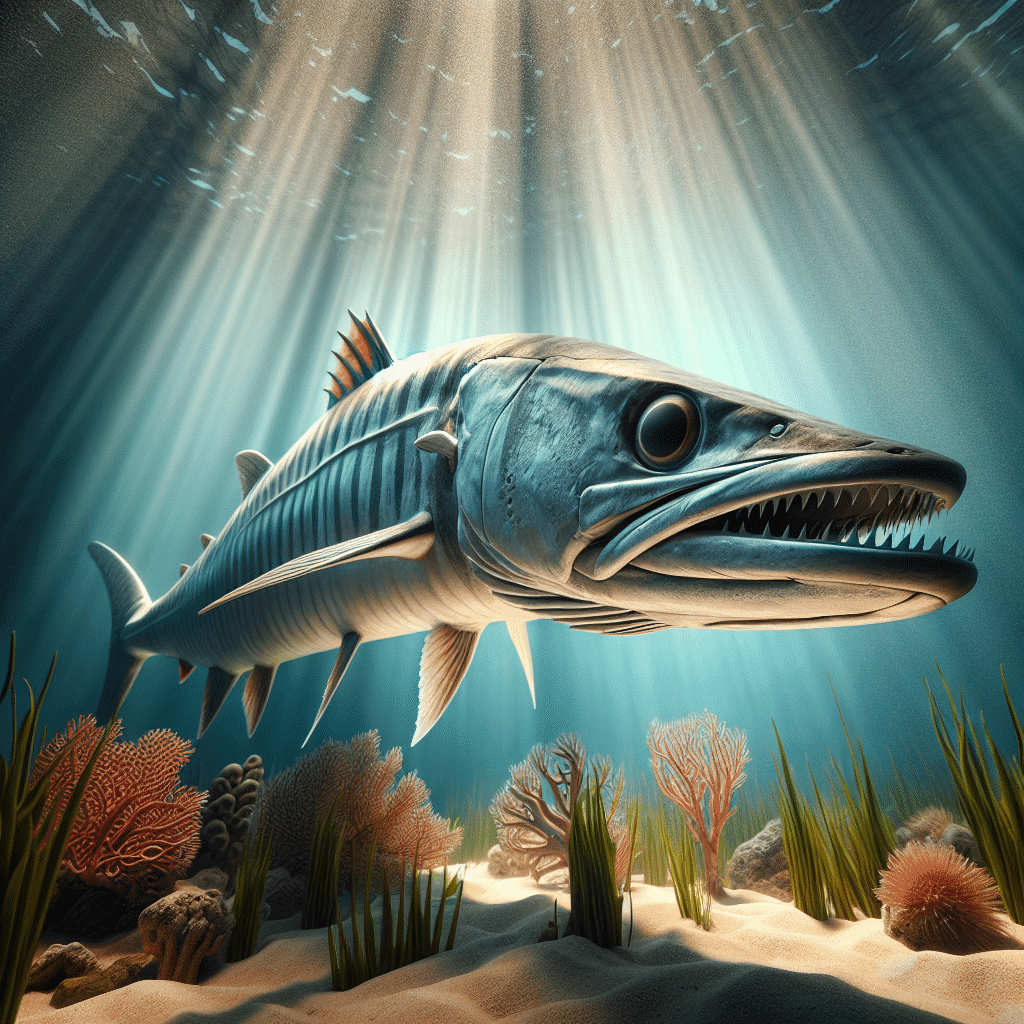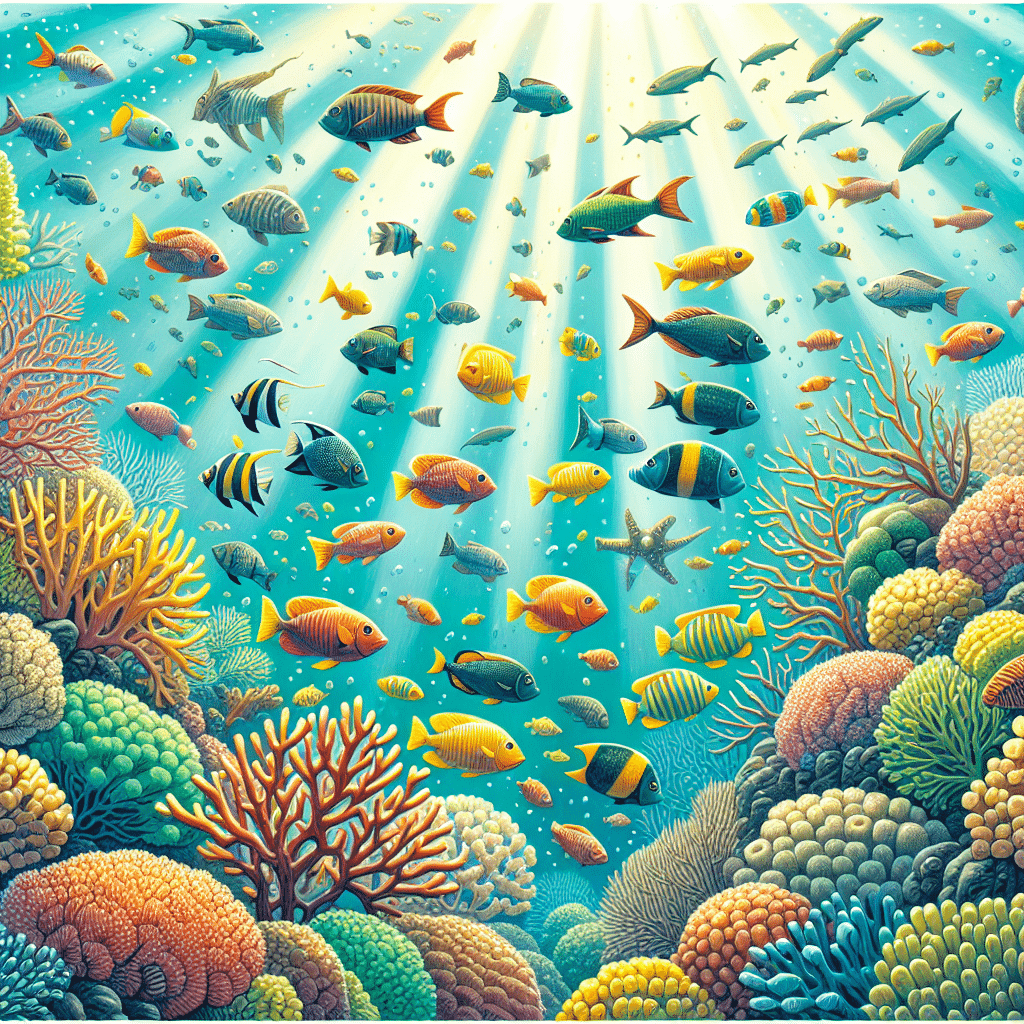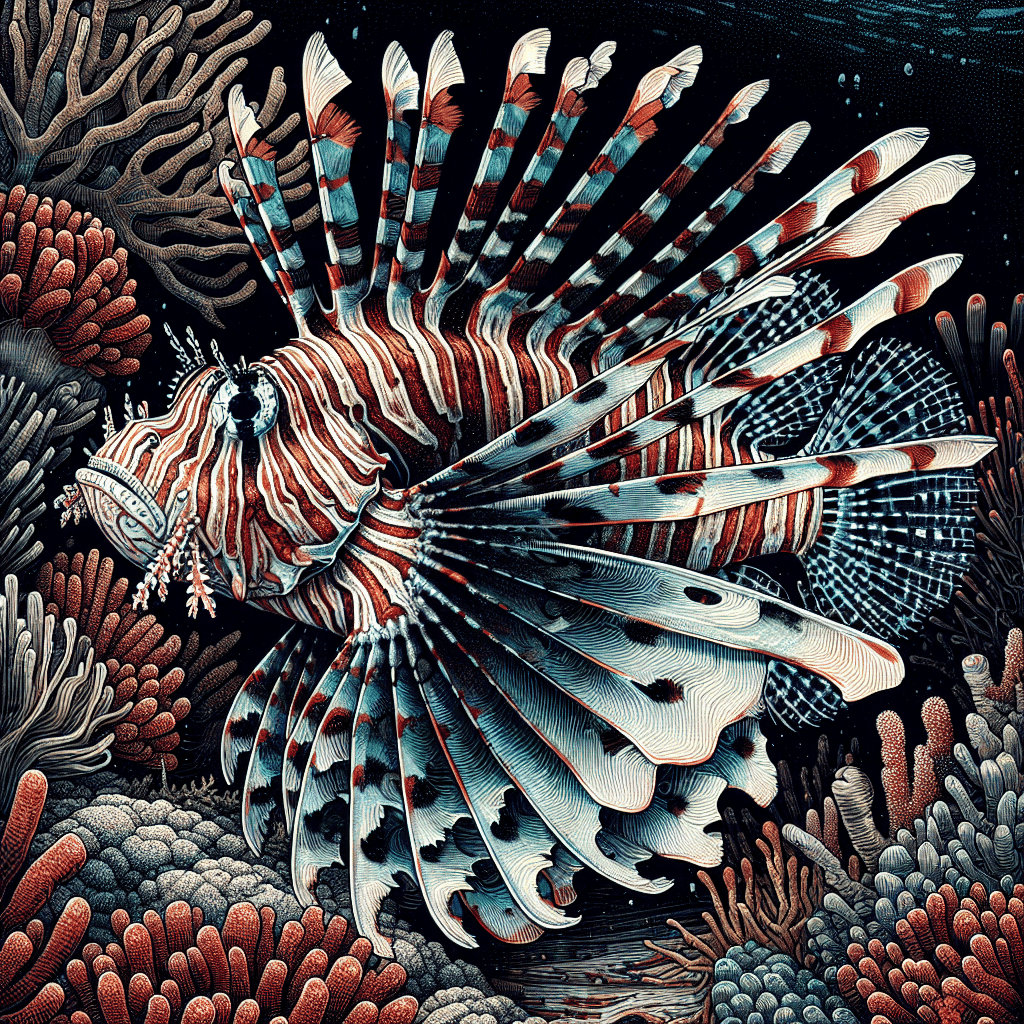Discovering Barracudas
Fascinating Characteristics
I find barracudas to be some of the most impressive fish in the ocean. Known for their streamlined bodies and formidable presence, they are among the most recognizable marine predators. With sharp teeth and a fierce hunting style, barracudas have captured the interest of many aquarium and reef tank enthusiasts like myself. They can grow to more than 5 feet long and weigh over 100 pounds, making them quite a sight to see (Oceana).
Here’s a quick look at some of their fascinating characteristics:
| Characteristic | Description |
|---|---|
| Length | Up to 5+ feet |
| Weight | Over 100 pounds |
| Teeth | Two sets: small for tearing, large for piercing |
| Lifespan | Around 14 years in the wild |
| Speed | Up to 36 mph (58 kph) |
Impressive Predatory Skills
What really stands out about barracudas is their impressive predatory skills. They are opportunistic hunters, primarily relying on their eyesight to spot prey. Their hunting tactics are quite remarkable; they can swim at speeds of up to 27 mph (43 km/h) and are known to accelerate from 0 to 30 mph in just 5.8 seconds (ForDivers). This speed and agility allow them to surprise their prey, making them highly effective hunters.
Barracudas typically alternate between swallowing smaller prey whole and cutting larger prey into manageable pieces with their formidable teeth. Their hunting prowess makes them a thrilling addition to any marine fish tank, but it’s essential to consider their needs and behaviors when caring for them.
Great Barracuda Details
Size and Weight
The great barracuda is an impressive fish, both in size and weight. These fish can grow to exceed five feet in length and weigh over 100 pounds. In fact, any barracuda over 4.8 feet is considered very large! Their robust bodies and streamlined shape allow them to swim at astonishing speeds, making them formidable hunters in the ocean. Below is a quick overview of their size and weight characteristics.
| Measurement | Value |
|---|---|
| Maximum Length | Over 5 feet (1.5 meters) |
| Average Weight | Over 100 pounds (45 kg) |
| Speed | Up to 36 mph (58 kph) |
| Lifespan | Around 14 years in the wild |
These stats make the great barracuda a notable presence in any reef tank environment.
Formidable Teeth
The great barracuda’s mouth is a fascinating feature, equipped with two sets of teeth that make it an effective predator. The outer row consists of small, razor-sharp teeth designed for tearing, while the inner set features larger, dagger-like teeth used for piercing. This unique arrangement allows the barracuda to hunt and consume prey with efficiency, either swallowing smaller fish whole or cutting larger ones in half to make them easier to devour.
Here’s a summary of the barracuda’s dental characteristics:
| Teeth Type | Description |
|---|---|
| Outer Row | Small, razor-sharp teeth for tearing |
| Inner Row | Larger teeth for piercing and cutting |
This impressive dental structure is just one reason why the great barracuda is an interesting species for aquarium enthusiasts. If you’re considering adding a barracuda to your reef tank, it’s essential to understand its predatory nature and feeding habits.
For more information on marine fish compatible with barracudas, check out our articles on marine fish, grouper, or lionfish.
Barracuda Behavior
Hunting Techniques
When I think about barracudas, their hunting methods really stand out. These fish are opportunistic predators, meaning they take advantage of any chance to snag a meal. Their primary strategy involves reliance on surprise and quick bursts of speed. They can accelerate from 0 to 30 mph in just 5.8 seconds, which gives them a fantastic edge when chasing down prey.
Barracudas often hunt alone or in small groups, using the element of surprise to their advantage. They typically go after smaller fish like jacks, mackerel, and sardines, as well as shrimp and prawns. By gathering in schools, they increase their chances of catching food, making their hunts more successful. Here’s a quick overview of their preferred prey:
| Prey Type | Examples |
|---|---|
| Fish | Jacks, Mackerel, Sardines |
| Crustaceans | Shrimp, Prawns |
Predatory Speed
Speed is a key factor in the barracuda’s ability to hunt effectively. These fish can swim at impressive speeds, reaching up to 36 mph (58 kph) when fully grown. Their streamlined bodies are designed for rapid acceleration, allowing them to overtake prey quickly.
Barracudas are often seen darting through the water, showcasing their agility and speed. With few natural predators due to their size and swiftness, they dominate their environment. Their swift movements make them formidable hunters, and it’s thrilling to watch them in action. Here’s a breakdown of their speed capabilities:
| Speed Capability | Measurement |
|---|---|
| Maximum Speed | 36 mph (58 kph) |
| Acceleration | 0 to 30 mph in 5.8 seconds |
Understanding the behavior of barracudas is essential for anyone considering keeping them in a reef tank. Their hunting techniques and speed not only highlight their predatory nature but also inform how I can best care for them in a home aquarium setting. If you’re looking to learn more about other marine fish that could coexist with barracudas, check out our articles on marine fish like the lionfish and grouper.
Barracuda Diet
Prey Selection
When I think about the diet of the barracuda, it’s fascinating to see how they have adapted to become such efficient predators. Barracudas primarily prey on smaller fish, which include herring, anchovies, mullet, tuna, grunts, jacks, groupers, and snappers. They are opportunistic feeders, meaning they will eat whatever is available in their environment, often taking advantage of schools of fish to maximize their hunting success.
Here’s a quick overview of their preferred prey:
| Prey Type | Examples |
|---|---|
| Small Fish | Herring, Anchovies, Mullet |
| Larger Fish | Tuna, Grunts, Jacks, Snapper |
| Other Marine Life | Shrimp, Prawns |
Barracudas are known for their incredible speed, often swimming over 30 miles per hour in short bursts to catch their prey (Marine Sanctuary Foundation). Their hunting strategy usually involves a rapid approach, followed by a powerful bite that can easily tear through the flesh of smaller fish.
Feeding Habits
In terms of feeding habits, barracudas are quite aggressive. They typically hunt alone or in small groups, which makes them more effective at ambushing their prey. When they do come across larger fish, they don’t shy away from using their formidable teeth to tear chunks out, ensuring they get enough nutrition from each catch.
For me, it’s interesting to observe how their feeding habits change based on the availability of food. During spawning seasons, barracudas may gather in larger schools, improving their chances of catching prey by confusing and trapping smaller fish. This communal hunting behavior showcases their adaptability and intelligence.
If you’re interested in keeping barracudas in a reef tank, it’s crucial to consider their dietary needs. Providing a varied diet that mimics their natural feeding habits will help ensure their health and well-being. You can look into specific marine fish options for feeding, as well as other tank mates that can create a balanced ecosystem.
Conservation Concerns
Threats and Risks
As a reef tank hobbyist, it’s essential to be aware of the various threats that barracudas face in their natural habitats. The primary risks include coastal development, ocean acidification, marine debris pollution, overfishing, boating accidents, and nutrient pollution. These factors can significantly impact barracuda populations and their ecosystems, such as coral reefs, seagrass beds, and mangrove forests (Marine Sanctuary Foundation).
Here’s a quick overview of the main threats to barracudas:
| Threat | Description |
|---|---|
| Coastal Development | Habitat destruction due to urbanization and infrastructure projects. |
| Ocean Acidification | Changes in ocean chemistry affecting coral reefs and marine life. |
| Marine Debris | Pollution from plastics and other materials harming marine species. |
| Overfishing | Unsustainable fishing practices reducing barracuda populations. |
| Boating Accidents | Collisions with boats leading to injury or death of barracudas. |
| Nutrification | Excess nutrients in the water leading to algal blooms that deplete oxygen levels. |
Conservation Status
The good news is that the great barracuda is not listed as endangered or vulnerable by the World Conservation Union (IUCN). This organization assesses the conservation status of species worldwide, indicating that barracudas currently maintain stable populations (Florida Museum).
However, barracudas are popular as both food and game fish, which can lead to overfishing if not managed properly. Larger species, like the great barracuda, have been implicated in cases of ciguatera food poisoning, making them a less safe choice for human consumption. It’s vital for us hobbyists to advocate for sustainable fishing practices and responsible reef management to ensure these fascinating fish continue to thrive in their natural environments.
By understanding the threats and conservation status of barracudas, I can make informed choices regarding my reef tank and contribute to the preservation of these remarkable creatures. For more information on marine life and their habitats, I recommend checking out articles on related species like lionfish and grouper.
Barracuda Species
Diverse Varieties
The barracuda genus Sphyraena contains 29 species, each with unique characteristics and habitats. These fish are found in tropical and subtropical oceans around the world, often inhabiting coral reefs and coastal areas. Some of the most notable species include:
| Species Name | Maximum Length | Common Habitat |
|---|---|---|
| Sphyraena sphyraena | 65 inches (165 cm) | Mediterranean Sea, Eastern Atlantic |
| Sphyraena barracuda | 10 feet (3 m) | Caribbean Sea, Gulf of Mexico |
| Sphyraena jello | 4 feet (1.2 m) | Western Atlantic |
| Sphyraena novaehollandiae | 6.5 feet (2 m) | Australian waters |
Barracudas can grow to impressive lengths, with some species reaching up to 1.8 meters long and weighing over 100 pounds. They usually exhibit dark coloration on their dorsal side, with shades ranging from green to grayish, and silver flanks, giving them a sleek appearance. In addition, some species have unique markings, such as irregular black spots or dark cross bands, which contribute to their camouflage in the ocean.
Unique Traits
Barracudas are known for their formidable predatory skills, but they also possess unique traits that make them fascinating to observe. Here are some interesting facts:
- Size Variation: Barracuda sizes can range dramatically, from 18 inches to 10 feet long, with females generally growing larger than males (Marine Sanctuary Foundation).
- Physical Features: Their streamlined body and powerful jaws equipped with sharp teeth allow them to capture prey efficiently.
- Behavior: While barracudas rarely attack humans, they are known to follow divers, possibly mistaking them for other fish (ForDivers).
- Coloration: The coloration helps them blend into their surroundings, making them effective ambush predators.
As a fish tank and reef tank hobbyist, understanding the various species and traits of barracudas can enhance your experience while caring for these remarkable marine animals. If you’re interested in pairing barracudas with other marine fish, consider species like snapper or grouper that can coexist in a reef tank environment.
Interaction with Humans
Rare Attacks
I’ve learned that attacks on humans by barracudas, particularly the great barracuda, are quite rare. Fatalities are even more uncommon. Most of the time, these incidents happen when barracudas mistake shiny objects for prey or attempt to snatch fish from spearfishers. The attacks are usually characterized by quick strikes that may result in lacerations and tissue loss (Florida Museum).
Here’s a quick overview of the barracuda’s size and speed, which contributes to its predatory capabilities:
| Characteristic | Measurement |
|---|---|
| Length | Over 5 feet |
| Weight | Over 100 pounds |
| Speed | Up to 36 mph (58 kph) |
Safety Precautions
For those of us who enjoy swimming or diving in areas where barracudas are present, there are some safety precautions to consider. First, it’s a good idea to avoid wearing shiny jewelry or accessories while in the water, as these can attract the attention of a curious barracuda. If you’re spearfishing, be cautious about how you handle your catch, as barracudas may be drawn to the activity.
It’s also wise to be aware of your surroundings while diving or snorkeling. If you spot a barracuda, observe its behavior. If it seems overly curious or aggressive, it’s best to calmly and slowly swim away without making sudden movements.
For those keeping barracudas in a marine fish tank, ensure that their tank environment is secure and spacious enough for them to swim freely. Proper care and feeding help reduce any stress that could lead to aggressive behavior.
Ultimately, understanding the behavior of barracudas and taking the right precautions can help ensure a safe interaction with these fascinating creatures.
Reproduction Insights
Spawning Behavior
When it comes to barracuda reproduction, I’ve found that not much is widely known, but it’s pretty fascinating. Spawning typically occurs in the spring, a time when the male barracuda deposits as many as 300,000 fertilized eggs in shallow coastal waters. After that, he returns to the deeper ocean, leaving the eggs to develop on their own. This method of reproduction is quite common among many marine species, but it highlights the unique lifecycle of the barracuda.
| Spawning Season | Egg Count |
|---|---|
| Spring | Up to 300,000 |
Reproductive Patterns
Barracudas generally spawn in coastal regions, which provides a safe environment for their young. The larvae that hatch from these eggs begin their life in the shallows, where they can find protection among the reefs. As they grow, they eventually move into deeper waters, mirroring the journey of their parents. It’s important to note that barracudas living in coral reef environments, such as yellowfin barracudas, can sometimes be dangerous for human consumption, especially since they feed on potentially poisonous species like pufferfish (ForDivers).
Understanding these reproductive patterns can be particularly useful for aquarium enthusiasts who are interested in keeping barracudas among their marine fish collections. It’s crucial to create a suitable environment that mimics their natural habitat to promote their health and well-being.



